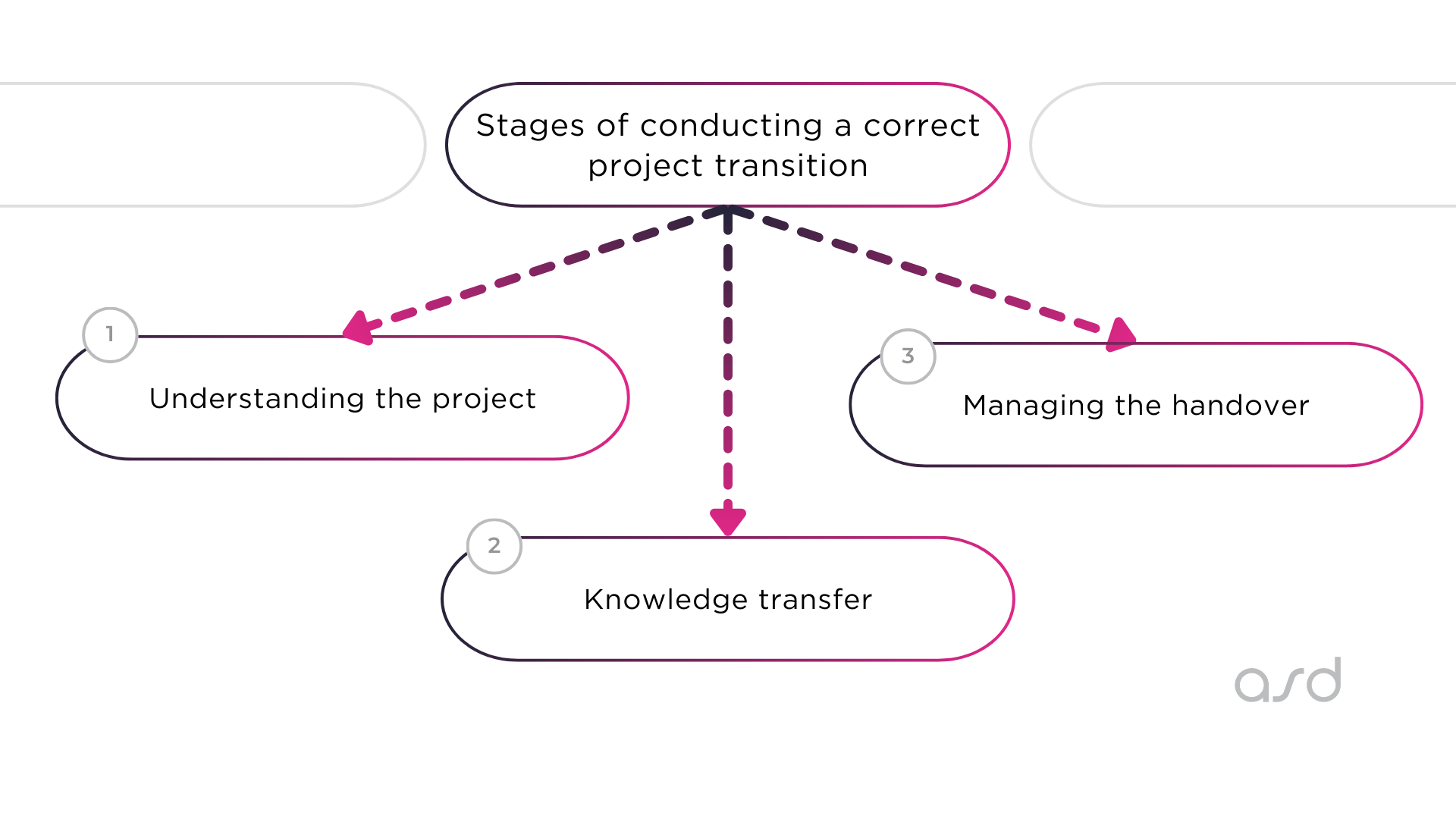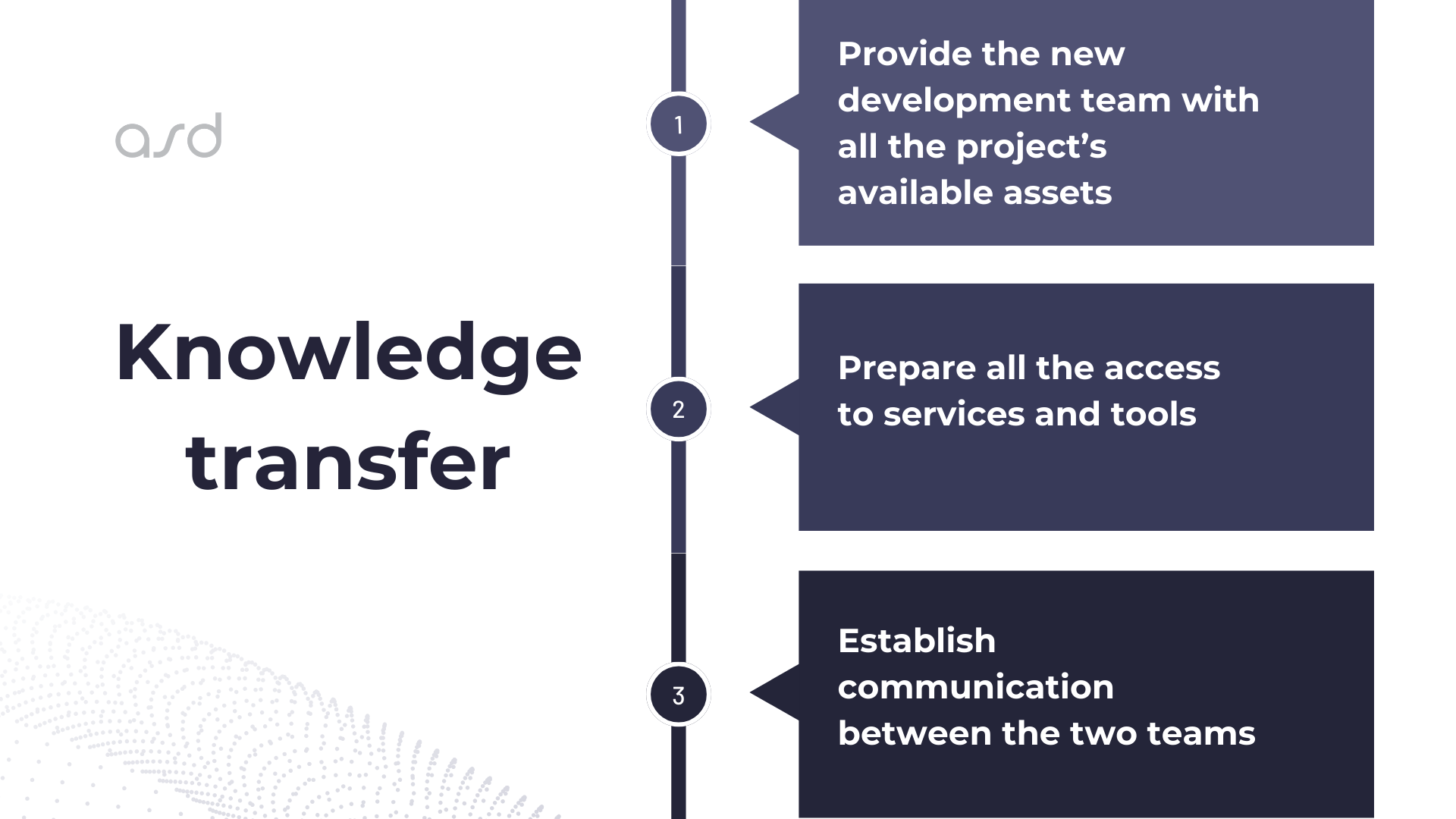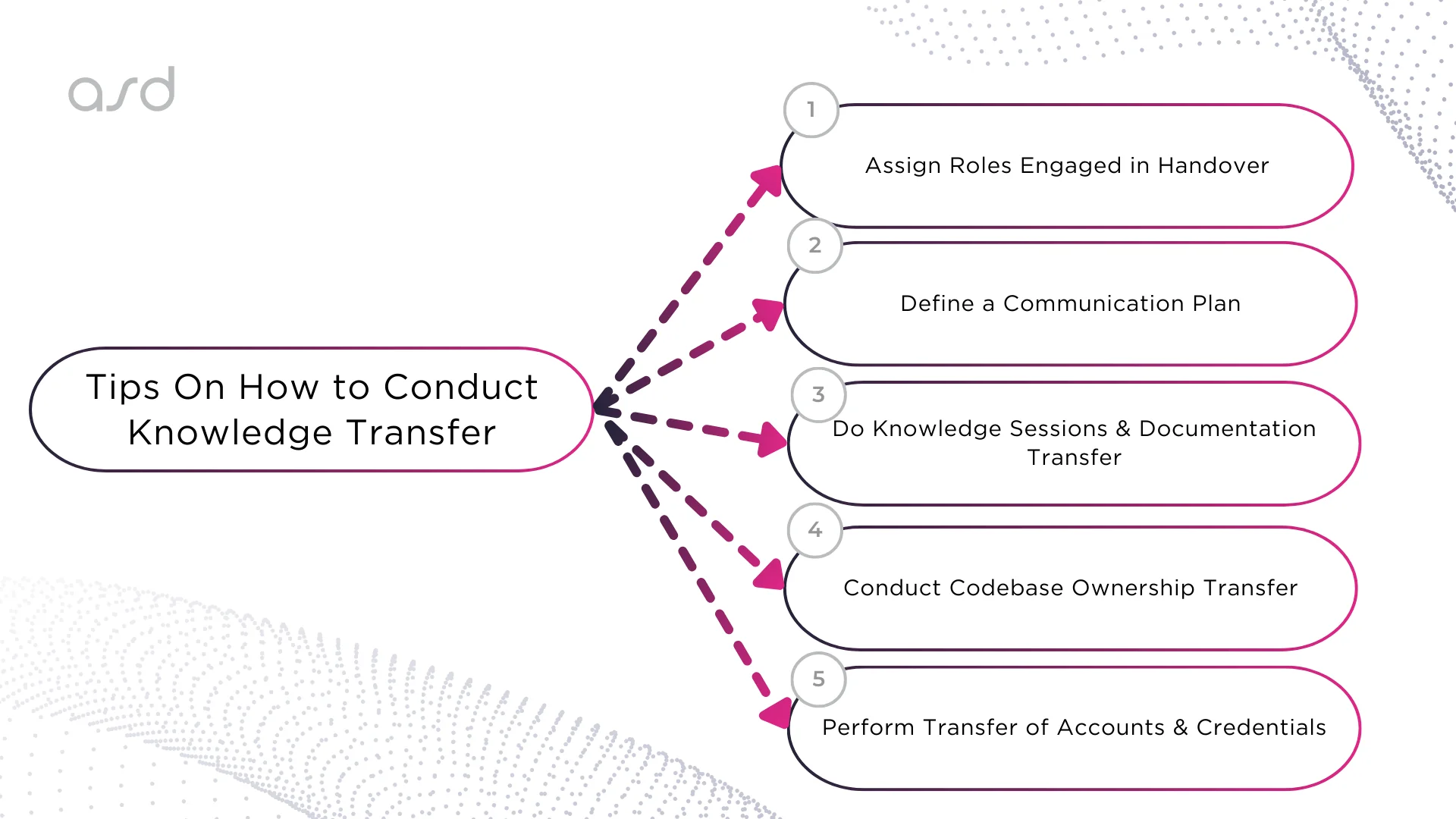How To Conduct Software Development Project Transition?
10 minutes read
Switching teams during a software project might feel overwhelming at times. It takes much patience and effort to make a project transition plan from one vendor to another. At the same time, you want to keep the project afloat while your new team dynamics are efficient. Seems like a mission impossible, right?
Well, you would be surprised to learn that such transitions are a common practice in many companies. For some reason, stakeholders choose to transfer their tasks to another team in the middle of development. And, it doesn’t necessarily imply a major disruption to the project. Your company can do it effectively without additional expenses and waste of time.
How? That’s what we are going to share with you today. Let’s dive into the detailed process of project handover.
It is a process of handing over the project with all the information, documentation, credentials, and other accesses to the new team who work on it the next. A project handover, for a new development team, includes:
The project transition plan consists of three consecutive stages, and each fulfils the necessary needs of the project transition process.

It is the first stage of conducting a correct project transition.
Besides, don’t forget to mention any third-party tools you are using now, as it is also necessary for the new team.
Knowledge transfer is a process that consists of 3 steps. During this process, you should provide the development team with all the information they need to start working on the project.

To manage the handover properly, choose the right people for a certain role in the handover process. Сhoose the right persons for tasks and make them responsible for a particular part of the handover process.
When you start working with the new development team, don’t forget to give them time to adapt to the new project. There is no need to rush and give them numerous tasks. Instead, it is more reasonable to support them and provide them with all the information they need or explain what they may not understand. The faster you pass this phase, the sooner the team starts fully working on the project.
Knowledge transfer brings information and data from a previous team or company to the current one. During knowledge transfer, the new team or company gets all the assets, tools, information, documentation, and everything that belongs to the project, and the new team can use it in the development process.
When you have much information to pass, it can complicate the process immensely. Many problems arise along the way and can potentially hinder the transition.
The main challenge in knowledge transfer is to transfer the experience and vision of certain specialists on the project. It is easy to structure and organize accesses, mockups, and other visible information that you can see and read, but experience and specific knowledge are in this person’s head, so you have to find the right approach to transferring it to the new team.
To cope with the challenge, you should conduct a series of online meetings where knowledge holders can share their knowledge and experience with the new team in the discussion, and the team can ask questions and get direct answers. Such an approach makes the process fast and improves the quality of knowledge transfer. If it makes sense for the other team, try organizing some extra knowledge-sharing sessions to enhance their perception of technical details.
Depending on how long the team worked on the project, there can be much information about different aspects of the development process. Somewhere there can be some redundant info, so it is preferable to go through all the information and define only the necessary and practical for the new team, for instance:
Knowledge transfer is a crucial process during the development team change. A well-planned step-by-step knowledge transfer will make the development team change process smooth and quick, so you can renew the software development process as soon as possible without losing time and quality.
To conduct a knowledge transfer successfully and without wasting time, remember the importance of well-structured information. You can lay out information in the form of the following:
You can make life for the other development team way simpler if you do the knowledge transfer responsibly. It can save them time and resources as there is no need to ask similar questions again and again.
Let’s talk about your project?
Feel free to ask any additional questions you might have. Our experts will be glad to assist you.

Knowledge transfer has a defined and structured process (but it can be customizable to your specific needs or circumstances), so you need to follow these four steps consecutive to perform a proper transfer of knowledge from the previous team to the current one:
In the context of knowledge transfer, it is vital to clarify what roles are involved in the procedure and what their KPI is.
Stakeholders, including managers and clients, play a supervisory role, ensuring a smooth transition and aligning expectations between the two teams.
Developers, being intimately familiar with the project, are in charge of sharing their insights and expertise with the other team developers.
Equally crucial is the receiving team, positioned to inherit the project. They need to soak up as much information as possible and be genuinely curious about how the project functioned before them. It will help them adjust the workflow to their own pace and prevent any problems associated with further completion.
Every project is recommended to pass a quality assurance stage. This lies on the shoulders of testing personnel – QA specialists. They can monitor if the transition meets stringent quality standards. If you frequently read our blogs on social media, you would also know that skipping QA or handing their task to incompetent team members is a bad idea. Such a shortcut often leads to undesirable oversights that take much time to fix later on.
The next question you have to care about is how you are going to establish the conversation between the teams. Of course, you can’t go without well-planned communication channels — such as Slack, email, or designated project management tools. We recommend choosing tolls that are specifically meant for professional usage since they have sufficient functions vital to maintain regular touchpoints.
Keep in mind that transferring projects is not a one-call affair, it will require more meetings. While performing a transition, track progress and address any emerging issues. Your company must also have clear reporting structures in place to ensure maximum transparency.
If the communication plan is the channel, the knowledge-sharing session is the tool of the transfer process. These sessions offer outgoing team members the opportunity to impart their knowledge, elucidating the codebase intricacies, design choices, and project-specific nuances.
The next part is completing comprehensive project documentation. It serves as a reference guide, encapsulating the project’s architecture, workflows, troubleshooting guidelines, and best practices. Once you’ve collected all the information, it’s not enough to just hand it over. You need to tidy up and organize the materials neatly in one accessible place. When it’s well-organized, it’s easy for others to follow without getting lost or needing lots of explanations.
Transferring codebase ownership demands meticulous attention to detail. Seamless migration of version control systems, like Git, along with comprehensive code reviews and walkthroughs, aids the incoming team in understanding the project’s structure and key functionalities. Detailed documentation acts as a roadmap, providing essential context to facilitate comprehension.
During the transition, the transfer of accounts and credentials assumes critical importance. Documenting all associated accounts, credentials, and access permissions ensures a comprehensive handover. Secure transfer methods, coupled with timely revocation of access for outgoing team members, guarantee a secure and smooth transition.

In wrapping up, transitioning teams during a software project might seem a daunting task, but it’s a regular practice. To make it work smoothly, you need to document everything happening, including goals, changes, and tech details, pass on all project assets, tools, and insights, and ensure effective communication.
Hopefully, we proved that project transition is not scary at all. Even though some challenges can pop up in the process, you can quickly eliminate them with a professional strategy in place. A well-done handover ensures a seamless transition, allowing the project to continue without losing momentum.
Read more interesting insight on our ASD blog – we have much value to share with our readers!
A software project transition plan is a roadmap that guides how a project moves from one team to another. It explains the steps and things needed to smoothly switch the project without causing problems.
A good transition plan should have:
It can vary. Sometimes a few weeks, sometimes a few months. It depends on how big the project is and how much needs to be shared.
Different people have different jobs:
Our team will contact you within 1 business day. Make sure to check your Spam and Promotions folder just in case.
We use cookies to personalize our services and improve your experience on this website. We may use certain personal data for analytics and marketing purposes.